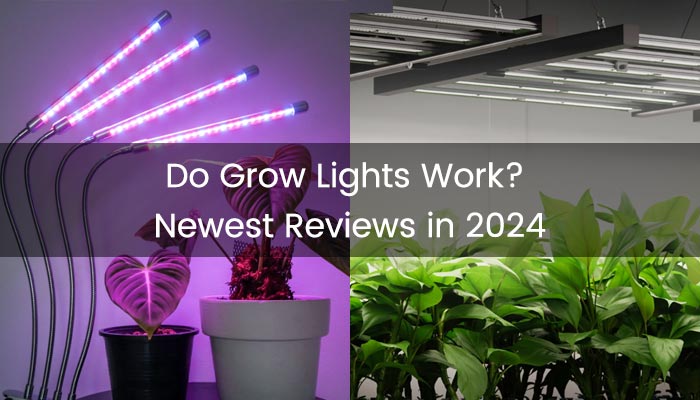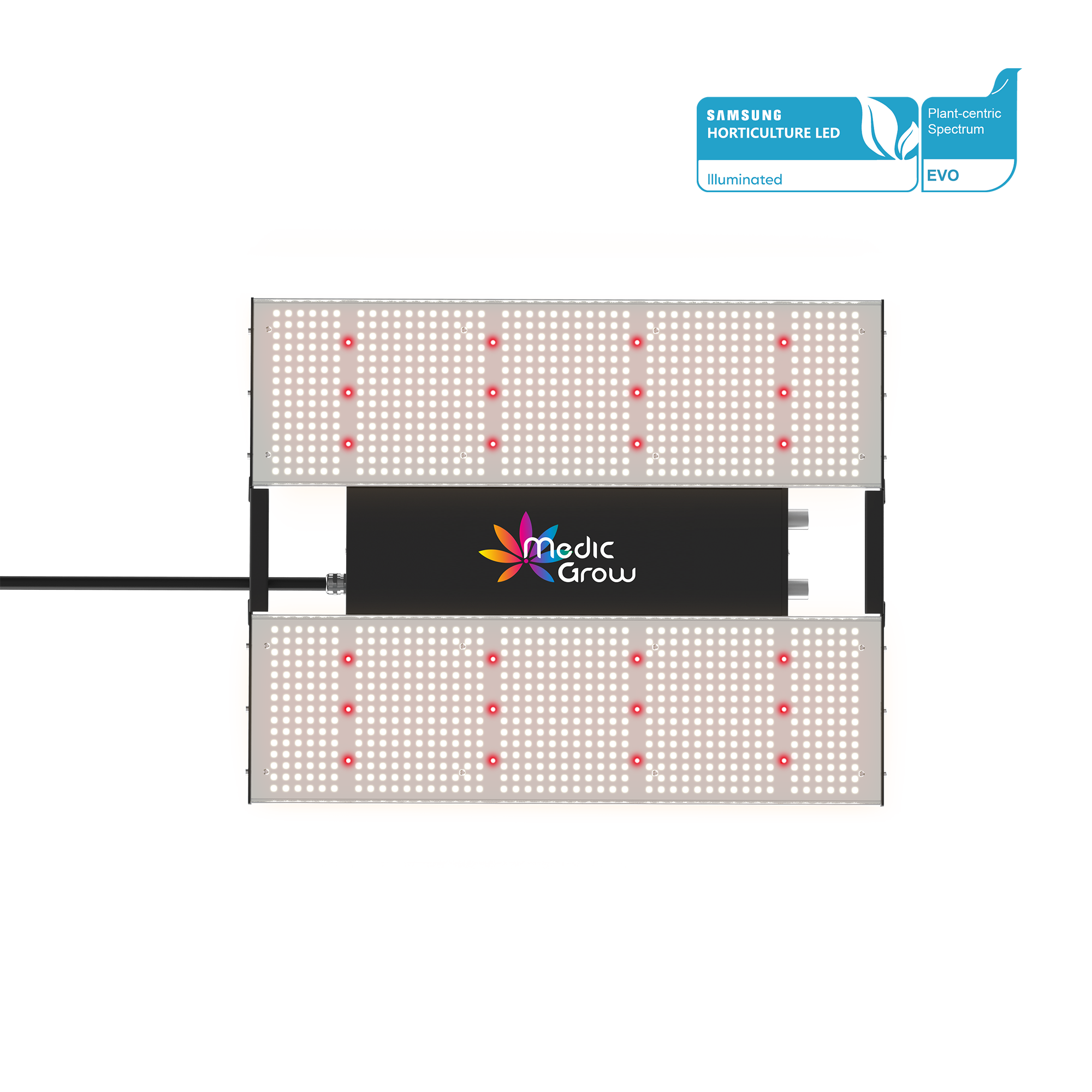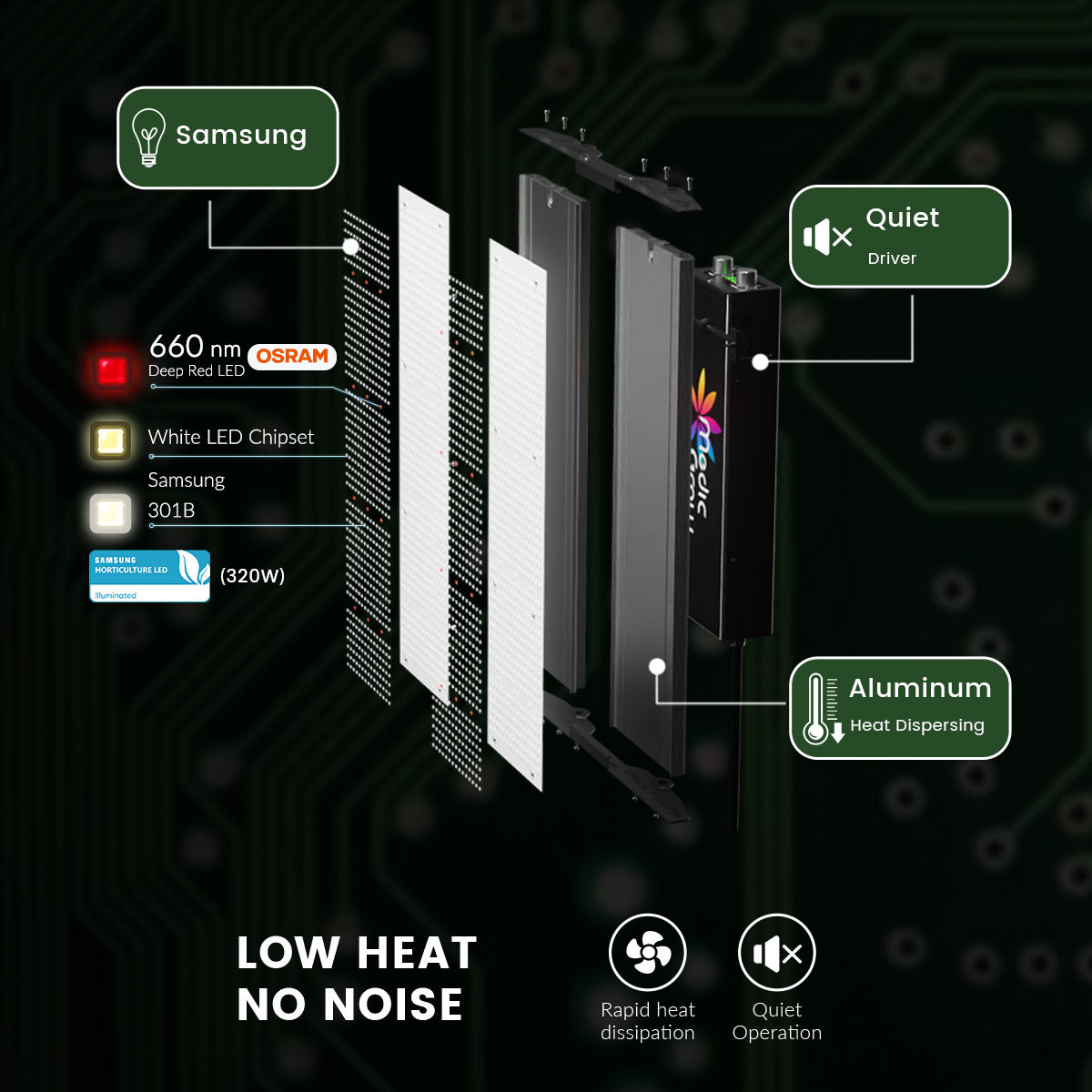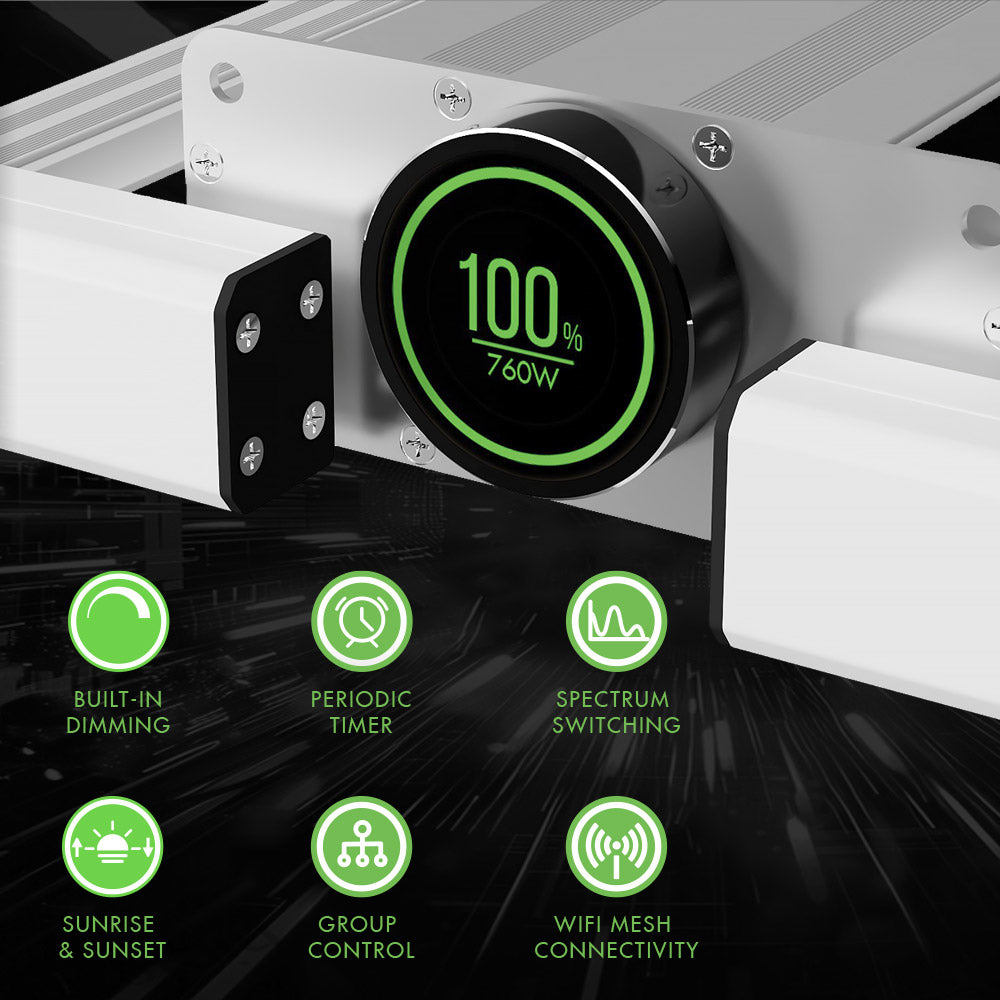新订户可享受9% 折扣

植物生长灯与 LED:2024 年最新评测
说到室内园艺,最常见的争论之一是植物生长灯与 LED。传统植物生长灯(如 HPS 或荧光灯)已使用多年,但 LED 植物生长灯因其节能、使用寿命更长和可定制光谱而广受欢迎。在本文中,我们将探讨这些照明选项之间的差异,并帮助您决定哪种最适合您的植物。
主要内容:
LED 生长灯的优点
LED 生长灯是最受欢迎的生长灯,因为它们节能、光谱可调、热量输出低,适合各种植物和生长阶段。我在下面列出了它们受欢迎的 7 个原因。
能源效率
研究表明,LED 生长灯在能源效率和植物生长率方面比传统高强度放电 (HID) 灯具有优势。
根据美国能源部 (DOE) 的数据,LED 生长灯比传统 HID 灯节能约 50%。
这意味着 LED 灯在产生相同光输出的情况下消耗的电量明显减少,从而降低了能源消耗和电费。
如果您所在的国家电费较高,例如德国,选择 LED 生长灯将为您节省大量电费。
使用寿命长
LED 生长灯的使用寿命通常为 50,000 至 100,000 小时,这意味着在标准生长条件下可连续使用十多年。
照明工程学会 (IES)发布的一项研究表明,LED 灯能够在更长的时间内保持其性能,并且光输出的衰减最小。
这种长寿命是由于 LED 采用了固态技术,这种技术更耐用,不易磨损。
因此,虽然 LED 生长灯的初始投资可能高于传统灯,但维护和更换成本较低。
全光谱光
许多 LED 植物生长灯提供模拟自然阳光的全光谱照明,支持植物生长的所有阶段。这可加快植物生长速度并提高花卉品质。
《园艺科学杂志》发表的一项研究表明,与在传统照明下生长的植物相比,在全光谱 LED 灯下生长的植物的生长速度提高了 20%。
加州大学研究人员进行的另一项研究发现,在全光谱 LED 灯下生长的植物可以产生质量更高、功效更强的花朵。
总之,全光谱 LED 生长灯能够复制自然阳光并支持植物生长的每个阶段,这使得它们成为种植者的宝贵工具。
可定制的光谱
可定制的光谱是现代 LED 生长灯最先进的功能之一,允许种植者定制光输出以满足植物在不同生长阶段的特定需求。
这一特点在 Medicgrow NEO 1000W 生长灯等高端型号中尤为明显,它可以微调光谱以发出特定波长。
圭尔夫大学受控环境系统研究机构的一项研究发现,当种植者调整光谱以满足作物的特定需求时,他们可以显著提高产量的质量和数量,最高可达 30%。
例如,在开花期调整光谱可使所需化合物的浓度提高约 15%,并提高花的密度和产量。
低热量输出
LED 生长灯,尤其是采用高效热管理系统(如铝制外壳)设计的 LED 生长灯,与 HID 或荧光灯等传统生长灯相比,产生的热量要少得多。
《应用园艺杂志》发表的一项研究发现,在 LED 灯下生长的植物所受的热应力减少约 35%,从而改善整体健康状况并加快生长速度。
研究强调,LED 灯的低热量发射不仅可以防止叶子灼伤,还可以保持植物冠层周围更稳定和最佳的温度。
这种低热量输出对于室内种植特别有益,因为保持适当的温度和湿度水平对于植物的成功生长至关重要。
环保
LED 生长灯因其无毒成分、可回收性和长寿命而越来越多地被视为植物栽培的环保选择。
美国能源部的一项研究强调,由于LED灯不含汞且能耗较低,对环境的污染程度显著降低。
国际能源署 (IEA) 发布的另一份报告指出,LED 使用寿命的延长有助于减少与照明相关的总体碳足迹约 30%,因为需要生产和更换的灯更少。
所以无论您是否是环保主义者,LED生长灯都是您节省金钱、保护环境和促进室内植物生长的最佳选择。
更好的光线穿透
某些 LED 生长灯能够更有效地穿透植物冠层,这对于促进植物整体健康和最大化生长具有显著优势。
Medicgrow Spectrum 等灯(包括植物专用的紫外线灯)旨在确保植物的下部叶子和阴凉区域也能获得充足的光照。
《园艺科学与生物技术杂志》发表的一项研究发现,光谱分布均匀的 LED 灯,尤其是包含紫外线和远红光的灯,可使整个植物的光合作用提高约 15%,从而显著促进整体生长。
总之,越来越多的研究支持 LED 生长灯在能源效率、环境友好性和促进植物生长方面的优势。
这些研究证实,使用LED生长灯不仅可以减少电力消耗、保护环境,而且还可以通过提供更高效的光照促进植物快速生长,使其成为现代农业和家庭园艺的理想选择。
如果您仍不确定哪种类型的灯最适合您的植物,请查看下面的详细比较。它涵盖了各种使用场景、植物和功能,以帮助您做出明智的决定。

LED 生长灯与 HPS
在比较LED 生长灯和 HPS之前,我们先来了解一下什么是 HPS 灯。HPS 灯(高压钠灯)是 HID 之一,以其高光输出而闻名,这在植物开花期尤其有益。然而,与生长 LED 灯相比,它们会产生更多热量,消耗更多能量,并且通常使用寿命更短。
另一方面,LED 灯更紧凑,散热性更好,非常适合使用种植帐篷套件的室内种植者。值得一提的是,一些制造商(如 Medicgrow)开发了带有定时器的植物生长灯,可以同时调节 50 到 200 个设备的光强度、光谱和时间,使 LED 灯更易于管理。
这些优势使得 LED 生长灯在大规模商业种植中具有极高的优势,更值得购买。因此,如果您更关注开花植物,HPS 灯是一个不错的选择,但如果您考虑热量、能源效率和管理,那么我推荐 LED 生长灯。
LED 与 HID 生长灯
当比较 HID 生长灯和 LED 生长灯时,LED 生长灯的优势要大得多——就像比较 iPhone 15 和 iPhone 6 一样;它们属于不同的时代。以下是许多人更喜欢 LED 而不是 HID 生长灯的原因。
能源效率
LED植物生长灯比 HID 植物生长灯节能得多。它们消耗更少的电量,同时提供相同甚至更高的光输出。这意味着种植者的电费更低,碳足迹更小。
另一方面,HID 生长灯(包括 HPS 和 MH 灯泡)需要更多能量才能产生高强度光。这会导致更高的运营成本和电费。因此,LED 正在取代 HID 灯作为个人和商业生长灯。
光谱和光强度
室内植物用LED 生长灯通过智能控制系统提供可定制的光谱和光强度,使种植者能够根据植物在不同生长阶段的特定需求定制光照。
然而,HID 生长灯的光谱是固定的。这种缺乏灵活性的情况可能会造成限制,尤其是对于那些种植多种植物类型或在不同生长阶段需要蓝光和红光的植物来说。
智能控制系统
许多现代 LED 生长灯(如 Medicgrow)都配备了智能控制系统。这些智能芯片可实现远程控制光照时间表和通过应用程序调整强度等功能。它们还可以逐渐调整光强度以模拟日出和日落,从而实现更柔和的光线变化。
这些先进功能对大规模商业种植者尤其有益,因为它们简化了管理多盏灯的过程。相比之下,HID 生长灯通常缺乏这种集成智能控制,需要手动调节和外部定时器,这可能不太方便和高效。
散热和紧凑性
生长 LED 灯的设计目的是散发更少的热量,这使其成为较小空间和生长帐篷的理想选择,因为这些地方热量管理对于植物的健康生长至关重要。
紧凑且发热量较小的设计也更适合小型种植帐篷套件,并减少了对额外冷却设备的需求。相比之下,HID 种植灯会产生大量热量,在狭小空间内管理起来可能很困难。
总而言之,无论您是个人种植者还是商业种植者,与 HID 相比,LED 生长灯都更具优势,因为它们更节能、散热更少且更易于管理。

LED 与荧光生长灯
荧光生长灯(例如 CFL 和 T5)通常被小型设施和初学者选择,因为它们的前期成本较低且运行温度较低。但是,我认为 LED 生长灯是一项更好的投资。LED 和荧光生长灯之间有什么区别?
生长 LED 灯适用于多种植物,从绿叶植物和草本植物到营养植物和开花植物。相比之下,荧光灯适用于低光照植物、幼苗和绿叶植物。它们的固定光谱和较低的光强度限制了它们的使用,通常需要更多的灯具才能达到与 LED 相同的效果。
总而言之,LED 生长灯是室内植物的最佳生长灯,无论您是业余爱好者还是希望从室内或大规模种植中获利的专业种植者,LED 都能满足您的所有生长需求。

最值得信赖的 LED 植物生长灯品牌
经过对各种植物生长灯的全面比较,很明显 LED 植物生长灯是室内植物的首选。虽然前期成本可能较高,但长期收益远远超过初期投资。
更便宜的替代品可能看起来很有吸引力,但它们往往无法提供室内植物最佳生长所需的稳定、高质量的光照。
值得注意的是,Medicgrow LED 生长灯具有可调节光谱和高品质三星二极管,可确保您的植物在每个生长阶段都能获得所需的最佳光照。如果您对室内园艺很认真,那么一定要选择 Medicgrow!
相关文章:
关于植物生长灯的常见问题
1. 什么类型的光最适合室内种植植物?
最适合室内植物生长的灯是全光谱 LED 生长灯。这些灯模拟自然阳光,提供植物生长各个阶段所需的各种波长。与其他类型的生长灯相比,LED 生长灯还节能且使用寿命更长。
2. 我可以将植物生长灯一直开着24小时吗?
不建议 24 小时开着植物生长灯。植物需要一段时间的黑暗来休息、呼吸和储存能量,就像人类需要睡眠一样。理想的光照时间安排是,在生长阶段,18 小时开灯/6 小时关灯;在开花阶段,12 小时开灯/12 小时关灯。
3.我应该把LED生长灯挂多高?
一般来说,在幼苗期,将灯悬挂在植物上方 24-36 英寸处。在生长期,将其降低到 18-24 英寸。在开花期,将灯放置在树冠上方 12-18 英寸处。请务必查看制造商的指南以获取更精确的建议。
特色产品
博客文章

Behind the Glow: The Science of Precision in Every Medic Grow Light

Medic LED Grow Lights: Leading the way in horticultural lighting standards

🌱 LED Grow Lights: A Hardware Engineer’s Buying Guide

- led grow light
💡 Top + Bottom Grow Lights: The Future of Precision Cultivation
如有任何想法请联系我们!
- 选择一个选项会导致整个页面刷新。
!




























